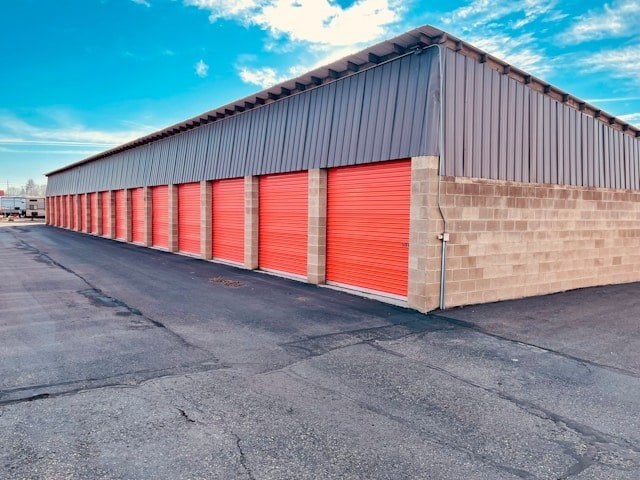Hunting and Fishing News & Blog Articles
How to Safely Move Your Hunting Gear to a New Home
Moving to a new home is a significant life event, and for hunting enthusiasts, ensuring that your hunting gear is transported safely and securely is crucial. This article will provide a comprehensive guide on how to safely move your hunting gear to a new home, covering everything from preparation and packing to transportation and unpacking. By following these steps, you can ensure that your valuable equipment arrives at your new location in the same condition it left.
1 Planning Your MoveTo plan your move, start by assessing all your hunting gear. Make a detailed inventory and take photos for insurance purposes. Check local and national laws regarding the transportation of firearms and ammunition. Different areas have specific regulations, so ensure you comply with them. Next, choose a moving date with favorable weather conditions. Avoid extreme temperatures and humidity that could damage sensitive equipment.
Connecting with fellow hunters on the no.1 hunting, fishing, and camping social media network can provide useful tips and recommendations. These communities often share valuable insights on safely moving hunting gear. By planning thoroughly and leveraging the knowledge of other hunters, you can ensure a smooth transition and keep your equipment safe throughout the move.
2 Preparing Your GearBefore you start packing, clean and maintain all your hunting gear. Thoroughly cleaning your equipment ensures it stays in good condition and helps identify any items that need repair. Disassemble larger items like rifles, bows, and tree stands. This makes them easier to pack and reduces the risk of damage. Use trigger locks and store firearms in hard-sided, lockable cases.
Keeping ammunition in separate, secure containers is essential for safety. Vacuum-sealed bags are great for storing your hunting gear, such as clothing, to save space and protect from moisture. Proper preparation is key when learning how to safely move your hunting gear. These steps will protect your equipment during the move and ensure it arrives in top condition.
3 Packing Materials and MethodsTo ensure your hunting equipment reaches its new destination intact, you need to pack it properly. First, make sure you have quality packing supplies. Invest in high-quality packing materials, including sturdy boxes, bubble wrap, packing peanuts, and foam padding. This ensures better protection for your gear.
It's crucial to use dedicated firearm cases that offer protection and security. Hard-sided cases with foam inserts are ideal. Also, clearly label all boxes and cases with their contents and indicate if they are fragile. This will help movers handle them with care.
4 Packing Your Hunting GearWhen packing your hunting gear, make sure to place firearms and bows in their respective cases. Use foam padding to fill any empty spaces inside the case to prevent movement during transit. Ensuring that each piece is properly secured is crucial for protecting your gear during the move.
Pack ammunition in small, sturdy boxes. Place these boxes inside a larger container with padding to absorb shocks. Use vacuum-sealed bags for clothing to save space and protect from moisture. Pack accessories like scopes, binoculars, and rangefinders in padded cases.
5 TransportationFurthermore, insurance is crucial. Obtain moving insurance that covers the full value of your hunting gear. This provides peace of mind in case of loss or damage. Make sure to check the coverage details and confirm they include high-value items. Additionally, plan your route carefully. Avoid extreme temperatures and rough roads to protect sensitive equipment. Lastly, stay organized. Keep an inventory list and label all boxes clearly to make the unloading process smoother at your new home.
6 Tips for Specific ItemsWhen moving specific hunting items, it's important to consider their unique needs to ensure they arrive safely and in optimal condition. Here are some tailored tips for different types of gear:
- Firearms: Always transport firearms unloaded. Use trigger locks and hard-sided cases for added security. Store them in a cool, dry place to prevent rust and damage.
- Bows: Utilize a padded bow case to protect your bow during the move. Avoid placing heavy items on top of the bow to prevent damage.
- Tree Stands: Disassemble tree stands and pack the parts in a secure, padded box. Clearly label the box to ensure careful handling.
- Camping Gear: Use waterproof containers for tents, sleeping bags, and other camping gear. This protects them from moisture and potential mold growth.
These steps are crucial for ensuring your gear arrives in excellent condition and is ready for use in your new home. By taking special care with each item, you can maintain the integrity and functionality of your hunting equipment.
7 Organizing Your New SpaceUpon arrival, inspect all your gear for any damage that may have occurred during transit. Refer to your inventory list to ensure everything has arrived. Make sure to clean your gear again before reassembling it. Check for any maintenance issues that need to be addressed.
When organizing your new space, start by setting up proper storage solutions for your hunting gear. Install custom shelving to keep smaller items like ammunition and accessories neatly arranged. A gun safe is essential for securing firearms and ensuring they comply with local storage laws.
A shed can help you organize your gear; it offers a dedicated space for your equipment and keeps your home clutter-free. Label each storage area clearly to make finding your gear easy and efficient. This organization will not only protect your gear but also save you time when preparing for your next hunting trip. Keeping your gear well-organized ensures it stays in good condition and is always ready for use.
Final ThoughtsMoving your hunting gear to a new home requires careful planning and attention to detail. By following the steps outlined in this guide on how to safely move your hunting gear, you can ensure your equipment arrives safely and is ready for your next adventure. Whether you're a seasoned hunter or new to the sport, taking the time to move your gear properly will protect your investment and allow you to enjoy your hunting activities without interruption.
Photos used:
https://www.pexels.com/photo/wooden-shed-interior-with-hunting-rifles-and-boxes-9714416/
https://unsplash.com/photos/a-storage-building-with-red-doors-and-a-sky-background-OpV94f2edwE
https://www.pexels.com/photo/man-and-woman-carrying-carton-box-4246009/



